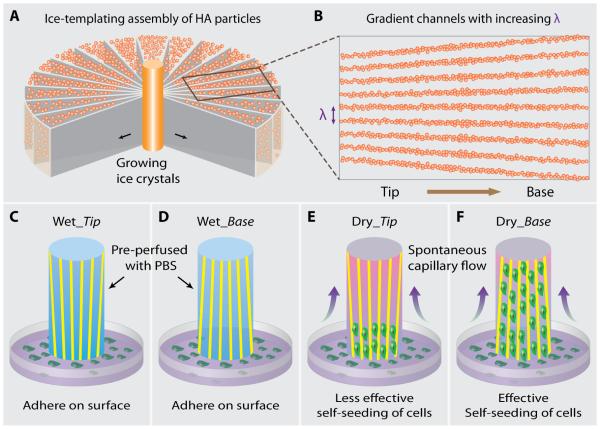Fig. 1.
Scheme of the fabrication of gradient ceramic scaffold and cell-seeding experiment. (A) When the ceramic slurry is freezing from the cold finger at the center, the growing ice crystals expel the hydroxyapatite (HA) particles and assemble them into a lamellar structure oriented parallel to the freezing direction. Since the ice front is circular, the lamellar spacing becomes wider and wider toward the mold. (B) After sintering, an HA scaffold with increasing channel width (λ) from tip to base side is obtained. In order to study the capillary effect of the gradient channels on seeding cells, (C-D) “wet scaffolds” pre-perfused with phosphate buffered saline (PBS) or (E-F) “dry scaffolds” are contacted with cell solution with their tip or base side, Wet_Tip, Wet_Base, Dry_Tip, and Dry_Base, respectively. All the scaffolds had the same size (12 mm × 5 mm × 2 mm). Lacking of capillary effect, cells adhered only to the outer surface of the wet scaffolds, regardless of whether the tip or base side contacted the cell solution. In the case of the dry scaffolds, cells were effectively self-loaded under the capillary. In addition, cells penetrated a much longer distance along the channels when the cell solution contacted the base rather than the tip side.

